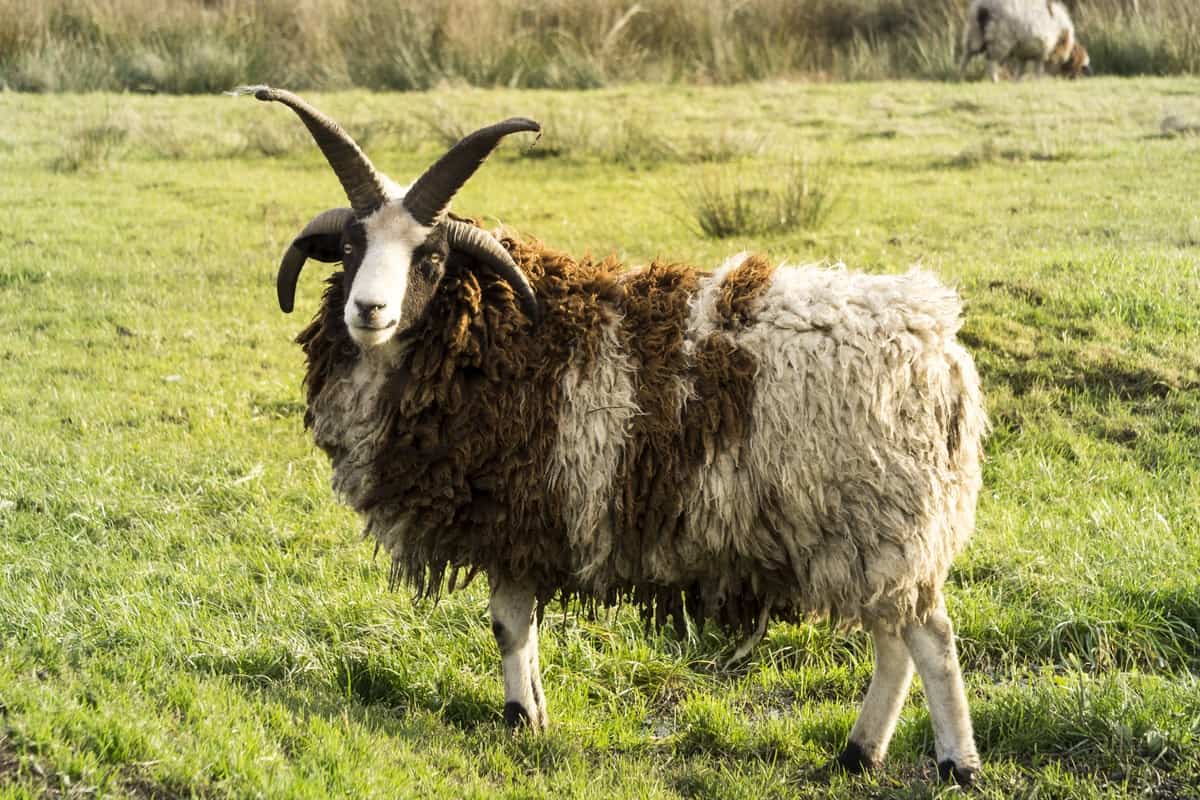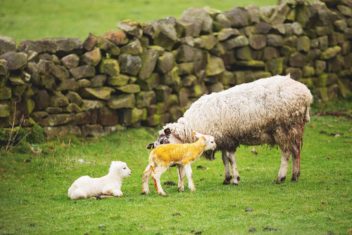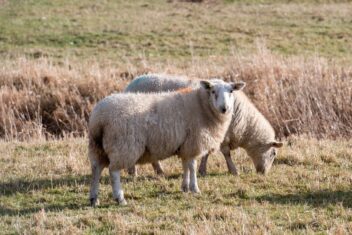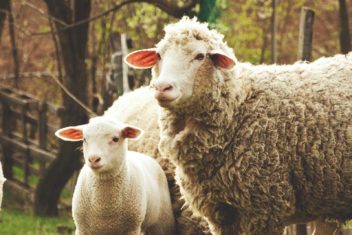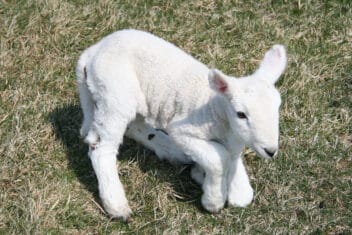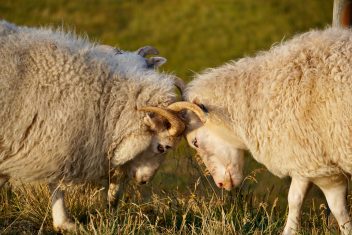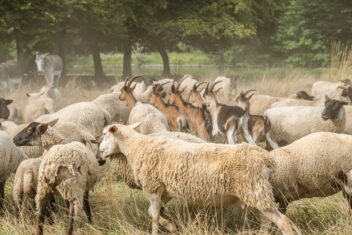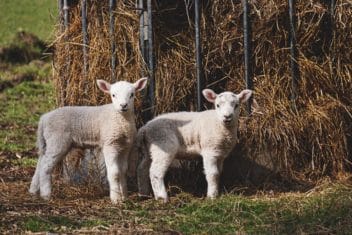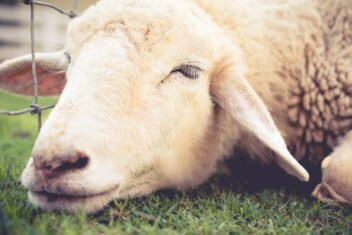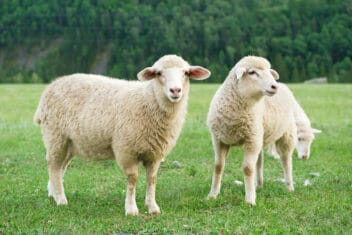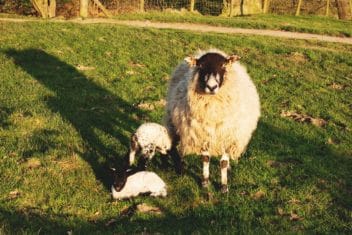When you think of animals with spots, what comes to mind?
Dalmations? Appaloosas? Jaguars?
What about sheep?
Spotted sheep might not be the first animals on your list when you’re trying to decide which animals to raise on your farm. However, if you’re looking for an excellent wool breed that is hardy and requires minimal care, the Jacob sheep breed is the way to go.
This spotted sheep is perfect for any homesteader – here’s why.
What is the Jacob Sheep Breed?
Jacob sheep are small, black and white sheep with horns. The ewes weigh no more than 120 pounds while rams don’t normally clock in at anything above 180 pounds.
These sheep are mostly white but have characteristic black patches or spots. The spots can also occasionally be brown or another shade, too, but black tends to be the most common.
While there are polled Jacob sheep, this is very uncommon – and these sheep are not considered purebred. Instead, most Jacobs have multiple horns, something known as polycerate breeding. Most sheep of this breed possess 2, 4, or even 6 horns, with horns present on both sexes.
Though ewes and rams both have horns, the horns on Jacob rams are truly breathtaking to behold.
Jacob sheep have long body frames with straight backs and rumps. Ewes have udders that are free of wool – a benefit when it comes to shearing – and all Jacob sheep have slender, triangular heads.
History of the Breed
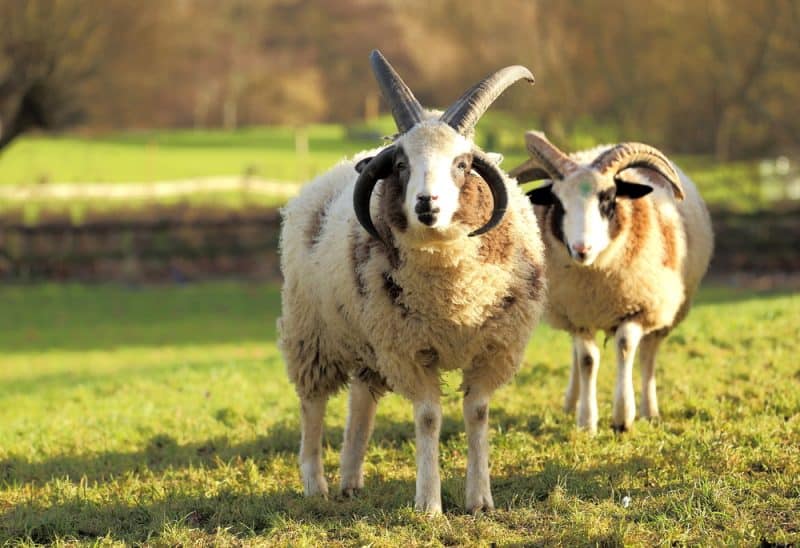
This breed is one of the oldest domesticated breeds in the world. Sheep with spots – likely the ancestors of what we now refer to as the Jacob sheep – have been documented by many cultures throughout history.
They’ve made appearances in artwork from the Middle East, Mediterranean, and Asia, with one of the most famed accounts being in the Biblical story of Jacob. Jacob raised and bred spotted sheep – likely, the ancestors of what is now the modern-day Jacob sheep. That’s where this breed got its name.
The sheep were first formally recognized in England in the 1600s and were widespread everywhere in the 1700s. They were first raised as park sheep, meant to serve only ornamental purposes. These picturesque animals were gorgeous to look upon but required very little care.
Though a primitive breed, the Jacob sheep was prized for its refinement and elegance. For much of its history, it was referred to as the Spanish sheep and used to help decorate British estates.
It was first imported to North America in the middle of the 20th century, but most of the continent’s modern population is from within the last three decades or so.
Over the years, selective breeding has allowed Jacob sheep to be larger and more productive. It is not one of the most common sheep breeds you will find, with the American Livestock Breeds Conservancy listing the North American population of this breed as a top conservation priority.
Reasons to Raise the Jacob Sheep Breed

Here are some of the best reasons to consider raising Jacob sheep on your farm.
1. Excellent Wool Production
When it comes to finding the best sheep breed for wool, you won’t have any shortage of options. From Merino sheep to Rambouillets, the market is flooded with potential choices.
Jacob sheep are also top contenders. This breed produces a medium fleece that is lightweight and open. It has a staple length of 4-6-inches and weighs up to 6 pounds.
It is highly sought after by fiber artisans since it is not only wonderful in texture but also offers a variety of combinations of colors (black, white, or a mixture of the two).
Most people shear their Jacob sheep once a year, in the spring. It is known for being springy with little lanolin. Some sheep of this breed even experience a natural break of the fleece in springtime so you may be able to do some rooing, too.
2. Hardiness
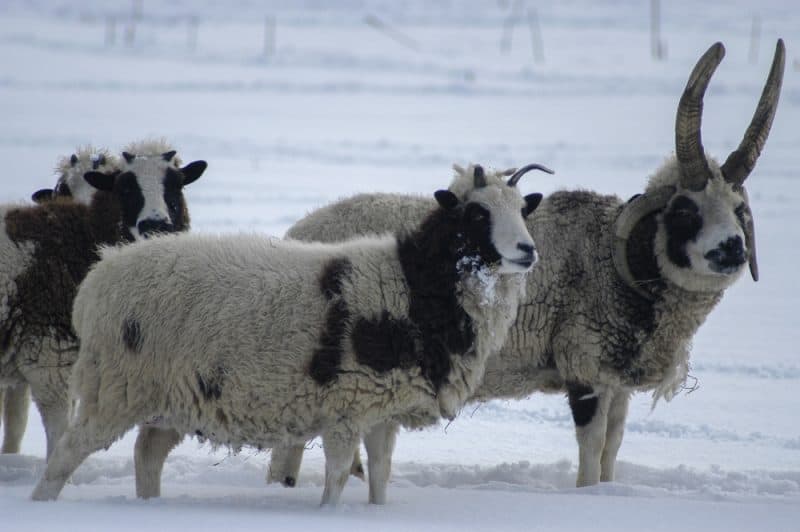
Jacob sheep are known for being low-maintenance animals with high resistance to hoof problems and parasites. They do well when left to their own devices, requiring just a basic shelter in the event of extreme temperatures. This sheep breed is known for its ability to thrive in extreme heat and cold and has good foraging capabilities.
They are also unique in that they can survive without the need for extensive supplementation. Although it’s always a good idea to provide your sheep with mineral supplementation, particularly if soil conditions are suboptimal, these sheep are more or less self-sufficient.
3. Unique Appearance
The Jacobs are not the only breed that can have piebald or polycerate coloring – others include Icelandic, Manx Loaghtan, Hebridean, and Navajo-Churro.
However, there’s something so beautiful about Jacob sheep that is definitely worth mentioning. It’s not just its coloring but its unique horns – this sheep is absolutely breathtaking.
4. Easy Lambing
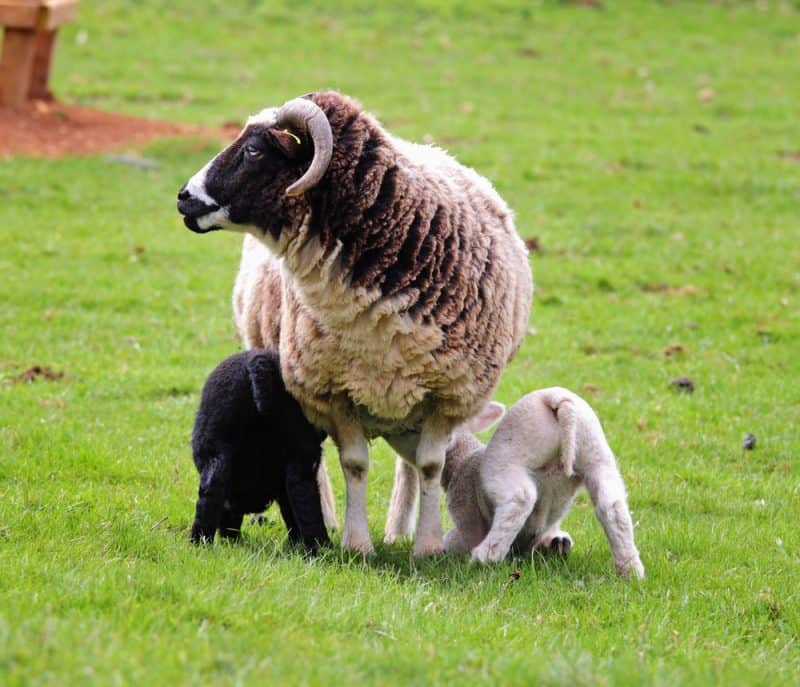
Jacob sheep are known for being good, easy lambers. They are seasonal breeders who cycle in the cooler months of the fall.
Typically, Jacob ewes will bear 1-2 lambs, though triplets can sometimes occur. Lambs can be weaned early, generally between 2-4 months of age. Ewes are known for being attentive mothers who are protective of their lambs.
5. Meat
If you want to raise sheep for both meat and wool, the Jacob sheep could be a good choice. Although they aren’t exceptionally fast-growing or prolific, the meat produced by a Jacob sheep is exceptionally lean.
There is very little external fat on a Jacob sheep. Because of this, despite the smaller size of the breed, you’ll get a higher overall yield compared to more improved breeds.
Special Considerations When Raising Jacob Sheep
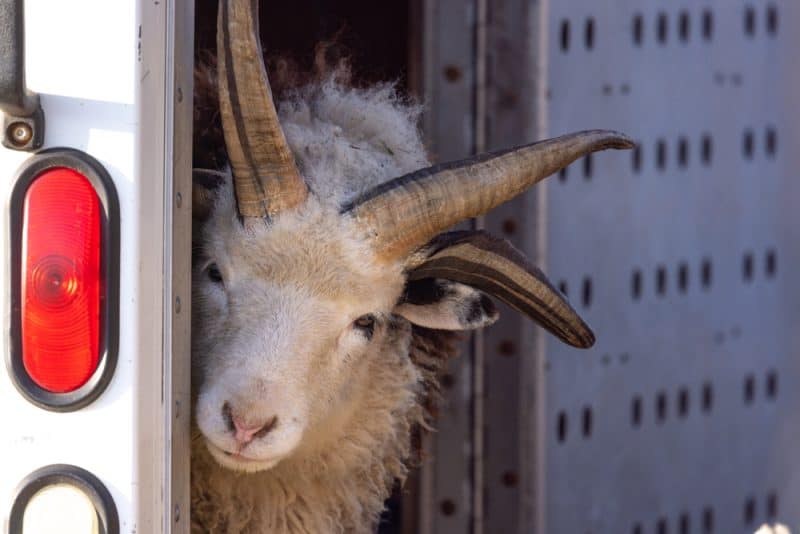
There are a few challenges you’ll have to plan ahead for when raising Jacob sheep. Keep these bits in mind.
1. Difficult to Find
One particular issue involved with raising Jacob sheep has nothing to do with actually raising them – and more with finding them to buy in the first place.
They aren’t very common in the US. Because of the sheep’s unique appearance, it has been an obstacle to conserve it as a pure breed. There are many kinds of spotted sheep now available, including Jacob-Dorset crosses. These are often sold as purebred Jacobs to unsuspecting buyers.
Because of this, it is very difficult to identify and buy purebred Jacob sheep.
2. Skittish Behaviors
Jacob sheep do not have strong flocking instincts. They are more difficult to manage in terms of herding and transporting.
They can be a bit skittish around people, but you can improve this with daily handling. In fact, many people have reported that, by interacting regularly with their sheep, they make excellent pets and are quite tame.
3. Long Tailed Breed

There are some benefits of raising Jacob sheep when it comes to management. Because there is no wool on the udders or scrotums of Jacob sheep, you will have a bit less shearing that you need to do.
However, the Jacob sheep does have a long, woolly tail that can extend almost all the way to the hock if it is not docked.
Tail docking is a controversial practice and most Jacob sheep owners choose not to dock completely anyway. However, it is important to note that you’ll need to be extra vigilant for flystrike if you allow the tail to remain.
Flystrike is more common in sheep who have not had their tails docked since the wool there can accumulate manure. Keep your barns clean and your animals healthy – and you should be able to get by.
4. Cow Hocks and Other Congenital Diseases
Jacob sheep are prone to a condition known as being cow-hocked. This is a defect found in many types of four-legged animals, typically livestock like cows, horses, cats, and dogs.
It occurs when a hock is set inward, making a sheep look as though it has splayed back legs. It can cause hooves to wear unevenly and ultimately result in permanent lameness.
Because of this, it’s important to keep an eye out for early symptoms. Many Jacob sheep will continue to live active, productive lives, but with others, extra veterinary care may be required. You may find yourself needing to trim hooves more often.
There are a few other congenital diseases to which this breed is prone. One is split eyelid, a defect that is common in many other polycerate British breeds. It’s also linked to the multi-horned trait. It can cause a separation of the upper eyelid in the center in extreme cases, affecting the vision of your sheep and causing pain.
How to Raise Jacob Sheep
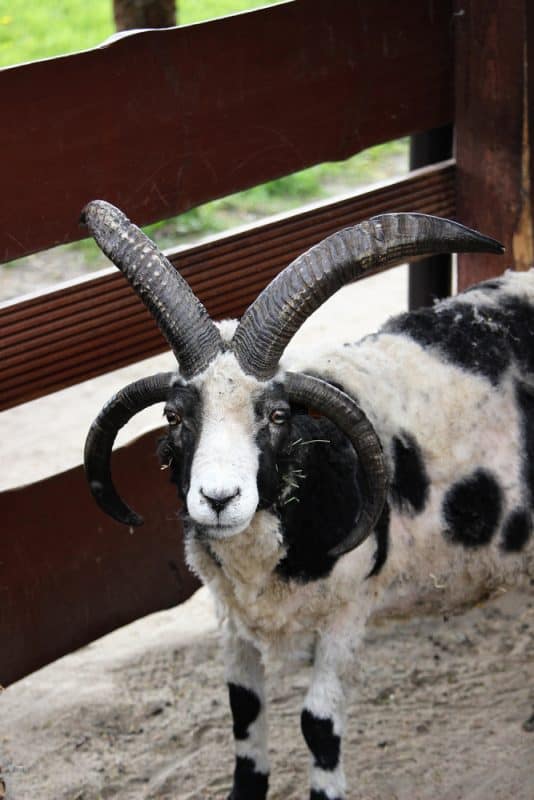
Jacob sheep don’t require much in the way of extra care. They are easy to tend to and require only the basics – shelter, food, and freshwater.
The shelter you provide for your Jacob sheep does not need to be extensive. A three-sided hut is all your animals need, as this will offer them shade and protection from driving precipitation.
Feed your Jacob sheep a combination of hay and fresh pasture. You can feed grain in small quantities but this is not necessary. They do best with lots of roughage!
There is a common misconception that Jacob sheep do not need to be provided with a mineral supplement. Although they are better at surviving on few nutrients than sheep of other breeds, it’s still a good idea to offer them a free-choice mineral supplement so they can make up for any deficits as needed.
Are Jacob Sheep Right for Me?
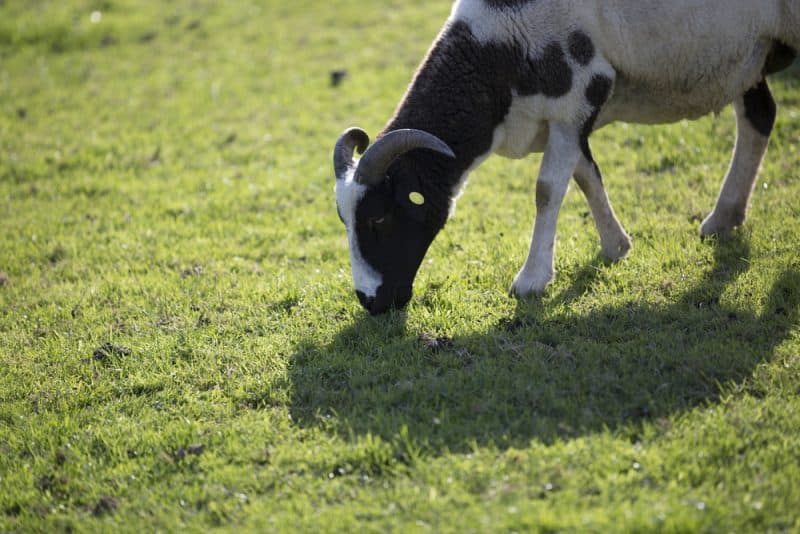
There are countless reasons to consider raising Jacob sheep. If for no other reason than its remarkable horns, this sheep breed is one to be considered.
If you’re still on the hunt for the ideal breed of sheep for your farm, consider Jacob sheep – while they can be difficult to find, the chase will be well worth the result!
